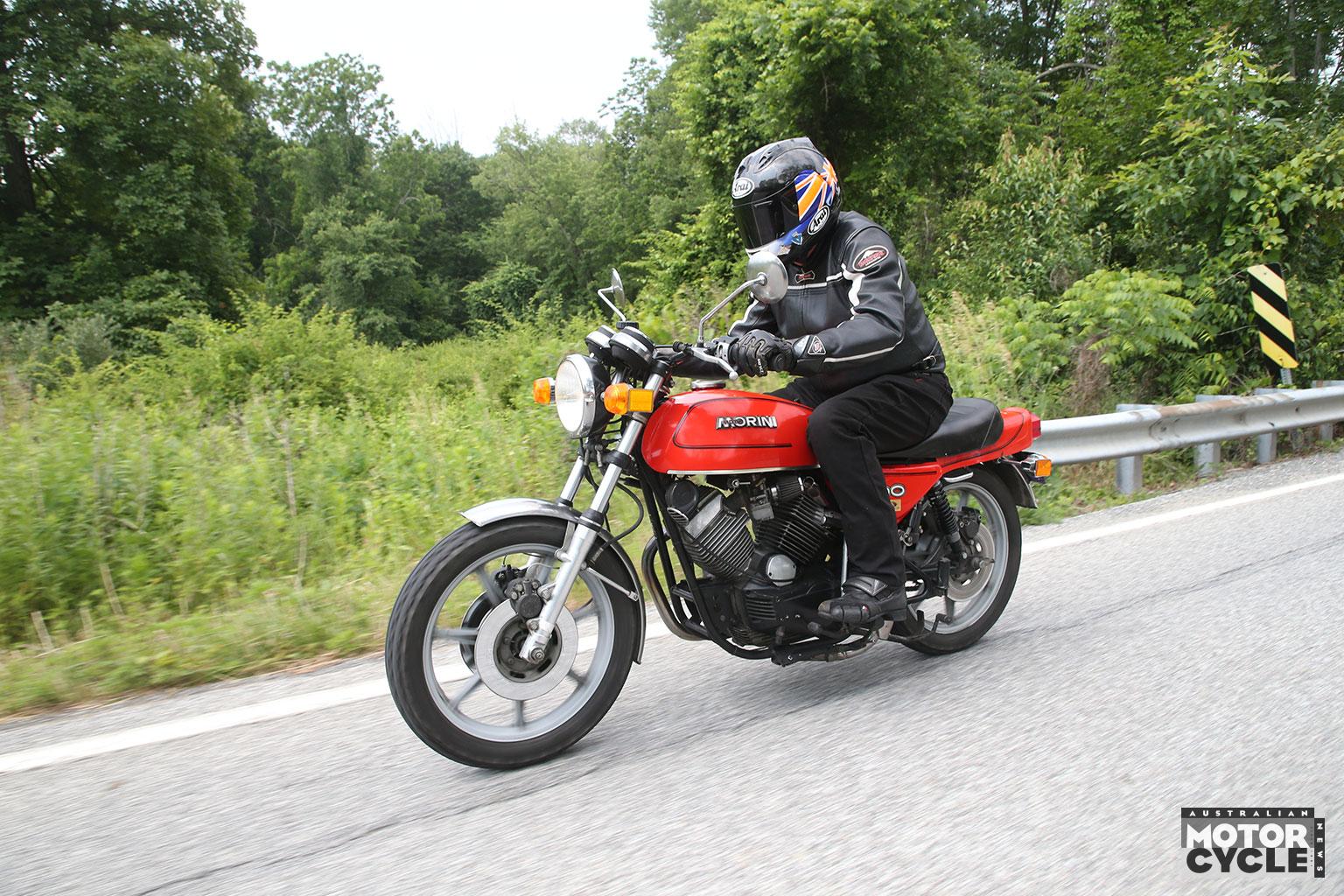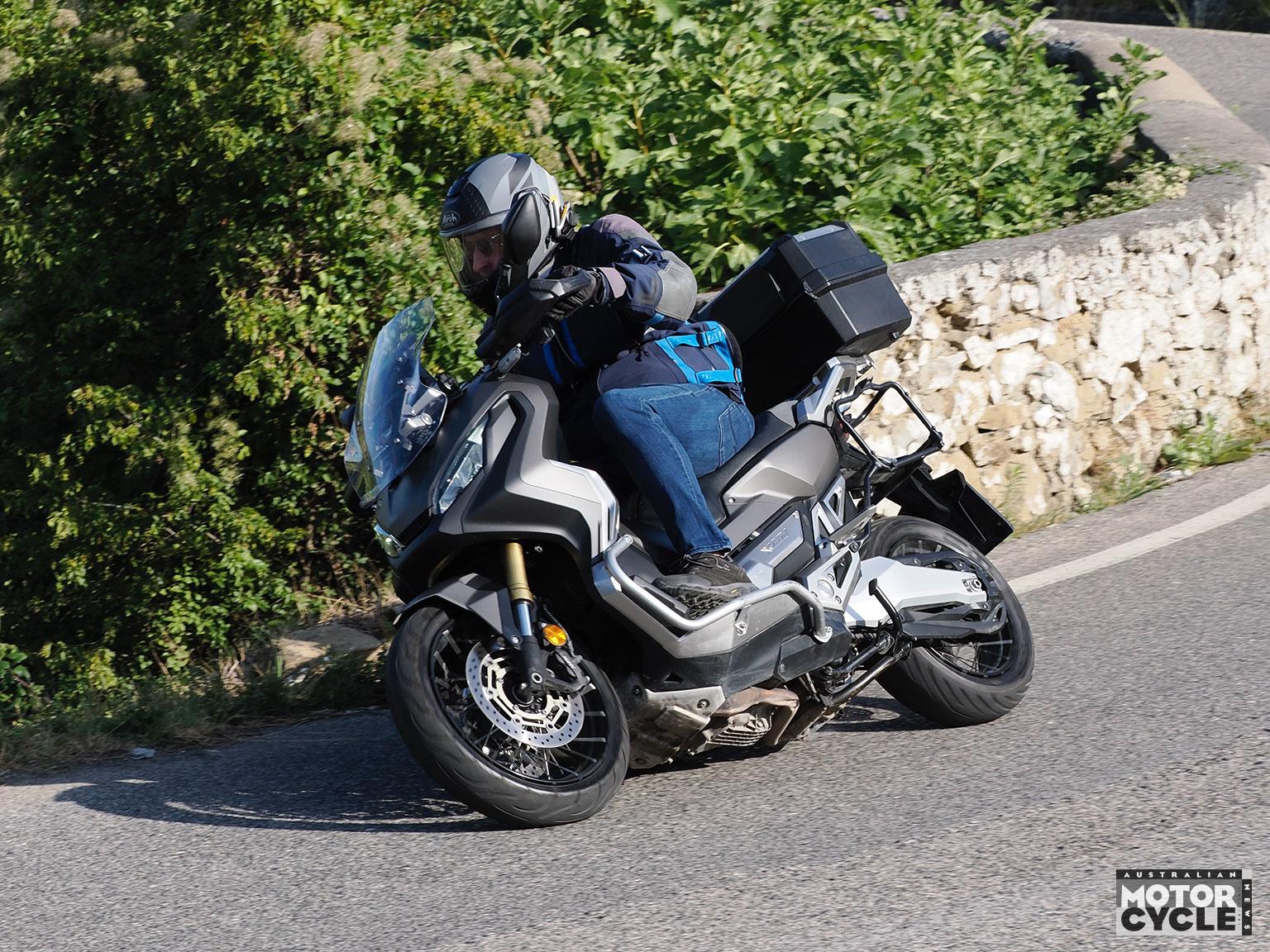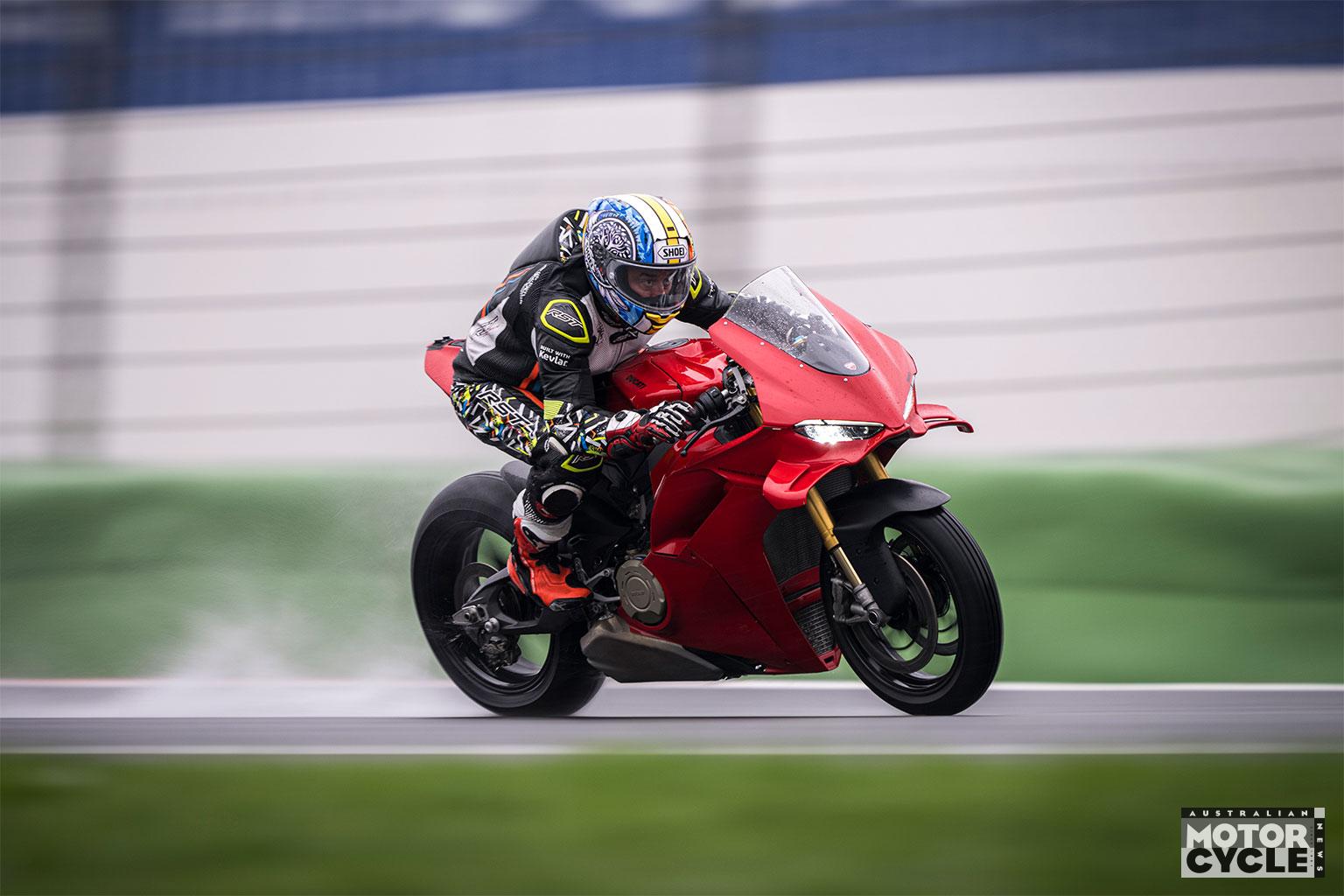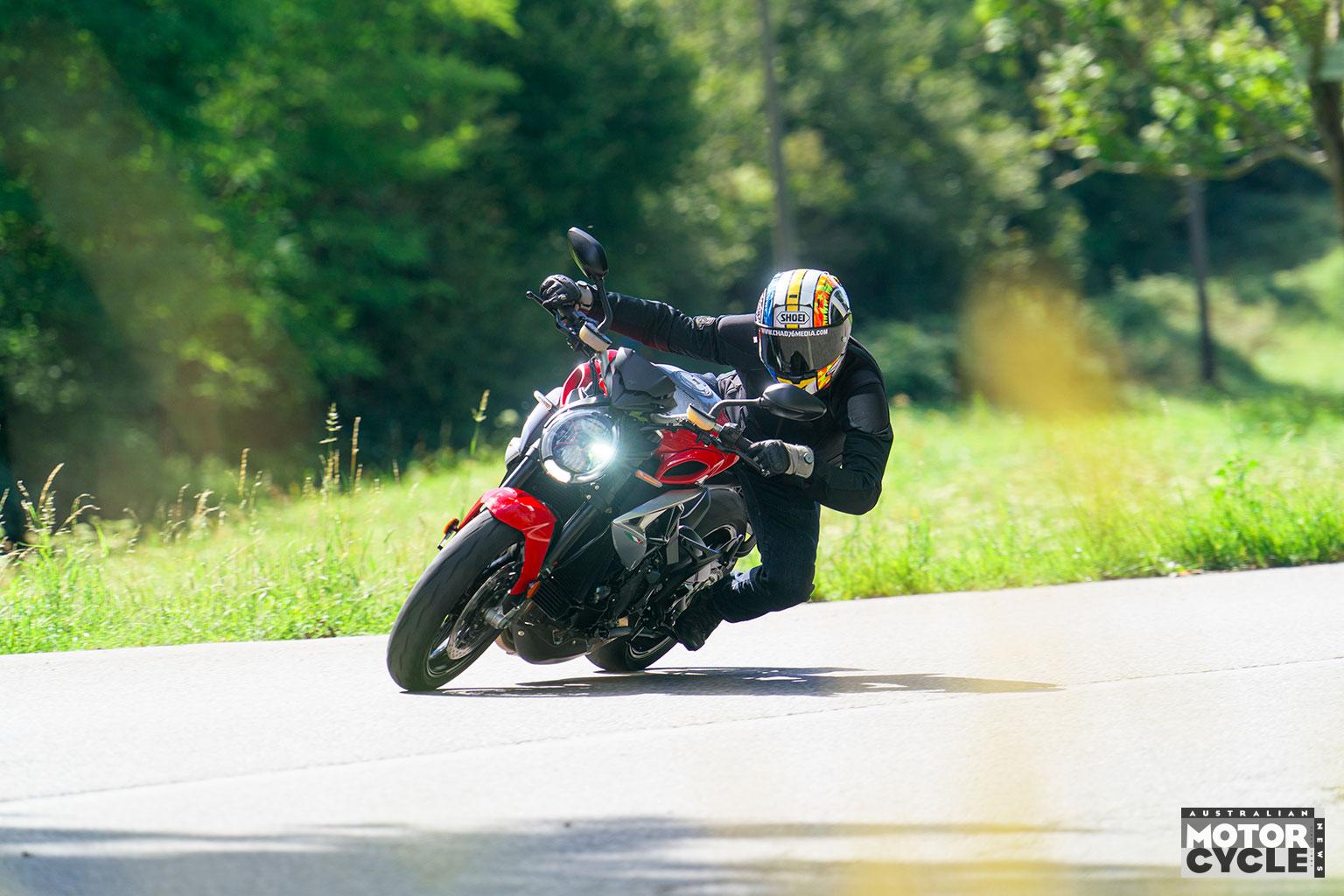Svartpilen meaning: Black arrow. Now fitted with a 799cc twin, it feels as if the Husqvarna Svartpilen 801 is now being shot from a compound bow.
When the Vitpilen and Svartpilen combo hit Australian streets back in 2018, The White Arrow and the Black Arrow respectively were 375cc singles dubbed 401. A great learner and city bike, but a bit small for experienced riders to get their jollies on. Soon after, Husqvarna introduced the 701 single-cylinder version with much more pep in its step but it still remained a city and suburban brawler. Fast forward to 2024 and things have taken a twin-cylinder turn with the introduction of the Svartpilen 801, now sporting a 799cc LC8c donk straight out of KTM’s medium calibre ammunition box.
As part of Pierer Mobility Group’s global empire, Husqvarna’s job is to provide a little bit of class with premium offerings. The Svartpilen 801 is Husqvarna’s highest-capacity nakedbike, outsized only by the Norden 901 adventure bike. If you ask me, the twin-cylinder 801 is just what Husqvarna needs for an assault into the bustling middleweight nakedbike territory. It stands out in its own right and the signature Husqvarna circular headlight complements its understated looks. In previous iterations, the Svartpilen has featured wire-spoked wheels whereas the Vitpilen has had cast-alloy wheels. This one has cast-alloy wheels albeit fitted with Pirelli MT60 RS tyres to help retain that rugged urban flat-tracker image. And the look is completed by a braced handlebar.

Those of you with a keen eye will notice immediately the Svartpilen 801’s close ties to the KTM 790 Duke but with a premium feel and this is not a bad thing; remember the Duke’s ‘scalpel’ nickname? Husqvarna would be mad to detract from the sweet-handling base package it started with and, thankfully, the pedigree is still alive and strong in the 801, although I would ditch the dirt tracker tyres for something stickier to exploit the Svartpilen’s capabilities further.
To the naked eye, the tubular chromoly main frame is similar, if not identical, to the KTM Duke. It is a minimalist structure that uses the engine as a stressed member for added strength and rigidity while keeping weight down and offering a precise amount of flex where required. The rear subframe is a cast-alloy unit that is perfectly sculpted around the airbox up to the rear taillight. It provides a strong and seamless seat unit for rider and passenger, while also supporting the exhaust system. Under the rider’s seat you will see the air-intake ducts providing fresh air to the LC8c engine while barking out a grunty induction noise.
Suspension, of course, is taken care of by KTM’s very own WP. The 43mm open-cartridge Apex fork gets the job done up front and is held in place by forged-aluminium triple clamps which ooze stiffness and quality. The fork is easily adjusted for compression and rebound without tools and there are five clicks of each to fiddle with – these are a similar spec as found on the 890 Duke. Mounted below the lower triple clamp is a steering damper to stop things getting too crazy.

The WP Apex rear shock is mounted directly from the open-lattice cast-aluminium swingarm to the frame without the use of a linkage. This keeps things simple and light. The shock features rebound and preload adjustability, but you will need tools to do so. The suspension is a bit on the soft side for my 100kg, but this is standard on everything I ride. I clicked everything a couple of clicks stiffer, which made the ride much nicer, but braking on bumpy backroads saw me bottoming the fork out a few times. The 801 is lively in the bends. Being quite a compact bike with a wide handlebar it is very quick to turn and change direction – I can see why the steering damper is fitted. I feel like the tyres are the bike’s biggest limitation in standard form. The tracker-style tyres lack a solid feeling at full lean and then squirm and even spin-up on the exit due to the reduced contact patch of the tread blocks. Some proper road tyres would be just the ticket.
The brakes are from J.Juan with front radial-mounted four-piston calipers, twin 300mm floating discs and a J.Juan radial master cylinder. Down the back, a floating twin-piston caliper squeezes a 240mm brake disc while Bosch cornering ABS keeps a watchful eye over the whole shebang.

The brakes felt quite nice, if a bit squishy at the lever, and I found myself using my first two fingers to brake, where I’d normally use one. It didn’t bother me too much but when I tried to use only my pointer finger, I found it sat on the curved part of the lever and I couldn’t get good leverage, even after adjusting the span. It’s just a niggling ergonomic thing and I would have liked to move the brake lever perch farther in on the handlebar but there was no room left before the bend of the ’bar starts. If you owned it, and felt you needed to rectify it, you could find a solution.
The heart of the 801 is the very familiar 799cc parallel-twin engine. Tipping the scales at just 52kg without oil, it’s easy to see why the whole bike weighs 181kg without fuel. The compact cylinder head is an eight-valve design with chain-driven assembled cams to save weight over forged cams. Steel valves are used for longevity and are actuated by DLC-coated finger followers for reduced friction and better performance at high revs. The RC8c has two balance shafts to keep those pesky vibrations from ruining your day and the engine is full of wizardry, such as active crankcase evacuation, a semi-dry sump and nikasil-coated cylinders to reduce power losses and internal friction.

Forged pistons are employed for reliability and are cooled by two oil jets per cylinder. The carefully weighted crankshaft is aimed to improve feel at partial throttle openings with the help of the full ride-by-wire throttle and engine management system. There is 77kW (103hp) of power available and 87Nm of torque – yep, almost identical to the claimed power of the KTM 790 Duke. In this application it is more than sufficient. There is plenty of torque available down low and ample horsepower up top. Having had the Honda 750 Hornet in my care for a while, I was delighted to have a bit more power to play with.
The Svartpilen is fun and playful, it wheelies like a boss, carves up the inner ’burbs and has plenty of engine for taking a pillion out of town. You need to work the gearbox, however, as the powerband is kind of narrow, and when things get fun the shift light isn’t far away. The gearing is fairly short, but with six ratios and a quickshifter available as standard allowing for clutchless shifting in any direction and at any throttle opening, keeping the revs in the sweet spot isn’t an issue.
The shifts are a little harsh and you need to be firm with them because if you’re a bit lazy with the gear changes, the shifter will cut the power but not actually engage the next gear. In the bike’s defence, it had only 300km on it when I picked it up and was far from run in. Although you only need it for starting and stopping, the cable-operated power assist and slipper clutch is very light at the hand and feels great. The lever is span-adjustable too, which is nice.

The electronics package is impressive for the price of admission, although as with all Husqvarnas and KTMs, you must budget for the Dynamic Pack in order to retain the high-end stuff which disables itself after a certain period of time if you don’t fork out for it.
There are three main modes in Rain, Street and Sport. Rain is the only map with reduced power and maximum traction control, which is lean sensitive and won’t allow wheelies, while the throttle is also softened. Street mode gives you full power but with a smooth throttle and moderate traction control intervention. Sport mode has a more direct throttle feel with full power. It allows some wheelspin and turns off the lean-sensitive part of traction control for a bit more hooning. In Sport mode you can also do wheelies and skids thanks to wheelie control and Supermoto ABS mode turning the rear-wheel sensor off.
With the Dynamic Pack paid for (it’s free only for the first 1500km) a fourth mode becomes available. Dynamic mode allows you to customise your own settings as well as having five levels of wheelie control, nine levels of traction control that can be adjusted on the fly and a dynamic throttle map.

I chose the Sport throttle map, as it is a bit more natural, level two traction control, the lowest wheelie control intervention and normal ABS. MSR, or motor slip regulation, is also doing its thing when you have selected mode three or higher in the traction control settings to reduce the chances of the rear wheel hopping under deceleration. On the road with a slipper clutch this is a very rare occurrence but it could be handy on the dirt.
The dash is a beautiful thing. The full-colour five-inch TFT screen is equipped with a USB-C port for plugging your phone in and shows all the vital info. Download the Ride Husqvarna Motorcycles app and you can hook right up to the bike without any optional equipment besides your own bluetooth-helmet device. This allows music control, phone calls and turn-by-turn navigation while running it through the app.
Comfort and ergonomics are decent. The seat is a bit flat but I could sit on it for hours without it being an issue. However, when stopped at a traffic light, the edge of the seat dug into my inner thigh a little. The seat feels pretty low – at 820mm I could flat foot with both feet and I’m 175cm tall.
With a range of a bit over 300km easily achievable, I would be happy to empty a full tank in one sitting.

The reach to the ’bar is nice. There is a little bit of weight on the wrists but not enough to get sore arms as you sit relatively upright. Once moving over 80km/h the wind takes any weight off your arms and you need to start hanging on a bit. The wind protection is minimal, as that isn’t what the Svartpilen is about.
Cleverly, the handlebar mounts are reversible, which brings the ’bar back 7mm if you find the reach a bit much.
My lovely wife tolerated the pillion seat without complaint, but did mention that she liked the BMW R 1300 GS a bit more. I took that as a win.
As expected, the fit and finish is quite good and, although I’m not a huge fan of matt or flat finishes, mainly because of issues with scratches, it does look pretty cool if you like the stealthy understated look. Besides, the Svartpilen is only available in matt black.

The 801 has backlit switchblocks as well as LED lighting. Once I adjusted the headlight down a bit, it performed excellently at night. The single round headlight does a cracker job, while still looking great.
For $15,990 ride away, the Svartpilen certainly scores high on the bang-for-buck scale and if a stylish tracker brawler is your thing, you want all the tech but none of the fat, get a Black Arrow into your quiver.
PROS: Great bang for the bucks, has decent service intervals, four years warranty, and high-end electronics.
CONS: Dynamic Pack costs extra, it only comes in black and would be better with road tyres.
THE COMPETITION
Husqvarna Svartpilen 801
$15,990 (ride away)

KTM 990 Duke
$20,090 (ride away)

Honda CB750 Hornet
$13,864 (ride away)

Yamaha XSR900
$18,399 (ride away)

Ducati Scrambler Icon
$18,200 (ride away)

Make it yours

Half the fun of buying a new ride is adding your flavour to it. I took a gander through the Husqvarna Technical Accessories page and there is a lot of bling to be had, some more critical than others. Firstly I would be adding the Dynamic Pack to unlock the extra Dynamic mode and the wheelie-control goodness. Heated grips are a must for all-year-round riders, so grab those. Cruise control adds an extra switch to the left switchblock and is nice to have when out of the city.
Every bike should have a sweet exhaust and there are two slip-ons to choose from: Remus or Akrapovic. I’d also be opting for the taller ergo seat as well as ditching the antennae-looking mirrors for some sweet ’bar-end units. Don’t forget the carbon flyscreen for above the headlight and you’re probably done.
SPECIFICATIONS

ENGINE
Capacity 799cc
Type Parallel twin, DOHC, four valves per cylinder
Bore & stroke 88mm x 65.7mm
Compression ratio 12.5:1
Cooling Liquid
Fueling EFI, 2 x 46mm throttle bodies
Transmission Six-speed
Clutch Wet, multi-plate, slipper type
Final drive Chain
PERFORMANCE
Power 77kW (103hp) @ 9250rpm (claimed)
Torque 87Nm @ 8000rpm (claimed)
Top speed 230km/h (est)
Fuel consumption 4.5L/100km (claimed)
ELECTRONICS
Type Bosch
Rider aids Lean-sensitive traction control (MTC), two-way quickshifter, cornering ABS with Supermoto mode, motor slip regulation (optional), cruise control (optional)
Rider modes Rain, Street, Sport, Dynamic (optional)
CHASSIS
Frame material Chro-moly steel
Frame type Trellis
Rake 24.5°
Trail 97.9mm
Wheelbase 1476mm
SUSPENSION
Type WP Apex
Front: 45mm, fully adjustable, 140mm travel
Rear: Monoshock, fully adjustable, 150mm travel
WHEELS & BRAKES
Wheels Cast alloy
Front: 17 x 3.5
Rear: 17 x 5.5
Tyres Pirelli MT 60 RS
Front: 120/70 ZR17 (58W)
Rear: 180/55 ZR17 (73W)
Brakes J.Juan
Front: Twin 300mm discs, four-piston calipers
Rear: Single 240mm disc, single-piston caliper
DIMENSIONS
Weight 191kg (wet, claimed)
Seat height 820mm
Width 827mm
Height 1108mm
Length 2126mm
Ground clearance 174mm
Fuel capacity 13.7L
SERVICING & WARRANTY
Servicing First: 1000km
Minor: 15,000km
Major: 30,000km
Warranty Four years, unlimited kilometres
BUSINESS END
Price $15,990 (ride away)
Colour options Black
CONTACThttps://www.husqvarna-motorcycles.com/en-au.html
husqvarna-motorcycles.com/en-au











